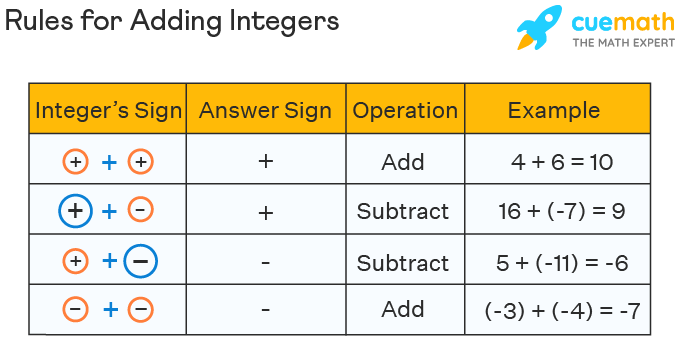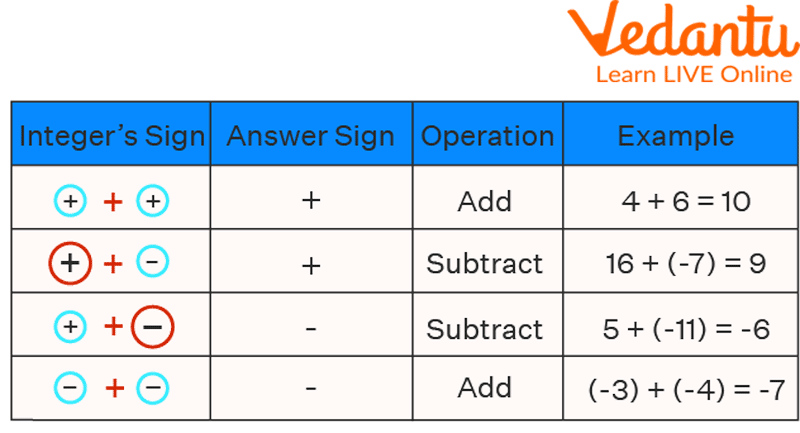What Are The 4 Rules For Adding Integers: A Quick Guide
Adding Integers | How To Add Positive And Negative Integers
Keywords searched by users: What are the 4 rules for adding integers rules of integers in subtraction, rules in adding and subtracting integers, rules of addition in integers, adding integers rules chart, rules of integers in multiplication, addition of integers rules and examples, rules of integers addition, subtraction multiplication division, rules of integers in division
What Are The 4 Rules Of Integers?
Certainly! Here is a revised paragraph with additional information to provide a clearer understanding of the topic:
Understanding the Four Rules of Integers
When dealing with integers, there are four fundamental rules that govern how multiplication between them works. These rules help us determine the sign of the result:
-
Positive times Positive: When you multiply a positive integer by another positive integer, the result is always a positive integer. For example, 3 times 2 equals 6.
-
Positive times Negative: When a positive integer is multiplied by a negative integer, the result is always a negative integer. For instance, 4 times -3 equals -12.
-
Negative times Positive: When a negative integer is multiplied by a positive integer, the outcome is still a negative integer. For instance, -5 times 6 equals -30.
-
Negative times Negative: Surprisingly, when you multiply two negative integers together, the result is a positive integer. For example, -2 times -4 equals 8.
These rules provide a clear framework for understanding how multiplication operates with integers, helping to determine the sign of the product based on the signs of the numbers being multiplied. It’s important to grasp these rules to work confidently with integers in various mathematical contexts.
What Are The Rules In Adding Integers?
How are integers added together, and what are the outcomes of these additions? When you add two positive integers, the result will always be a positive integer. Conversely, when you add two negative integers, the sum will have a negative sign. However, when you add two integers with different signs, the operation becomes subtraction. In this case, the sign of the result will match the sign of the integer with the greater absolute value. This means that if one integer is larger in magnitude than the other, the result will take on the sign of the larger integer. Understanding these rules is essential for performing arithmetic operations with integers.
What Are The 3 Ways To Add Integers?
To understand how to add integers, it’s essential to grasp three fundamental rules that govern this operation. These rules are outlined in the Integer Addition Rules Chart:
-
Positive + Positive: When you add two positive integers together, you simply perform addition as usual. For example, 8 + 5 equals 13.
-
Negative + Negative: When you add two negative integers, you must consider that they both contribute to the overall negativity of the sum. In this case, (-8) + (-5) equals (-13).
-
Positive + Negative (or Negative + Positive): When you add a positive integer to a negative integer (or vice versa), it’s equivalent to subtracting the absolute value of the smaller integer from the absolute value of the larger integer. For instance, (8) + (-5) can be understood as 8 – 5, which equals 3. Conversely, (-8) + (5) can be seen as -8 + 5, resulting in -3.
These rules provide a foundation for performing addition and subtraction with integers, helping you work with a wide range of mathematical problems involving both positive and negative numbers.
Aggregate 5 What are the 4 rules for adding integers





Categories: Details 19 What Are The 4 Rules For Adding Integers
See more here: ranmoimientay.com

Adding two positive integers results in positive integers, whereas adding two negative integers will result in the sum with a negative sign. But, the addition of two different signed integers will result in subtraction only and the sign of the result will be the same as the larger number has.Add the absolute value of the numbers and keep the same sign. DIFFERENT SIGNS- Subtract and Keep the Sign of the Bigger Number! Subtract the absolute value of the numbers and keep the sign of the bigger number. SAME SIGNS- POSITIVE Multiply the numbers.
- The sum of an integer and its additive inverse is 0. …
- Adding two positive integers always results in a positive value. …
- Adding two negative integers always results in a negative number. …
- Adding integers with 0 results in the same number.
- A positive number times a positive number equals a positive number.
- A positive number times a negative number equals a negative number.
- A negative number times a positive number equals a negative number.
- A negative number times a negative number equals a positive number.
| Type of Numbers | Operation | Example |
|---|---|---|
| Positive + Positive | Add | 8 + 5 = 13 |
| Negative + Negative + (–) | Add | ( – 8 ) + ( – 5 ) = – 13 |
| Positive + Negative | Subtract | ( 8 ) + ( – 5 ) = 3 |
| Negative + Positive | Subtract | ( – 8 ) + ( 5 ) = – 3 |
Learn more about the topic What are the 4 rules for adding integers.
- Adding integers – Cuemath
- Multiplying and Dividing Integers – Steps, Rules, Interactives and …
- Addition and Subtraction of Integers (Rules and Examples)
- Adding Integers: Definition, Rules for Addition, Examples – SplashLearn
- INTEGER RULES REFERENCE SHEET
- Integers and rational numbers (Pre-Algebra, More … – Math Planet